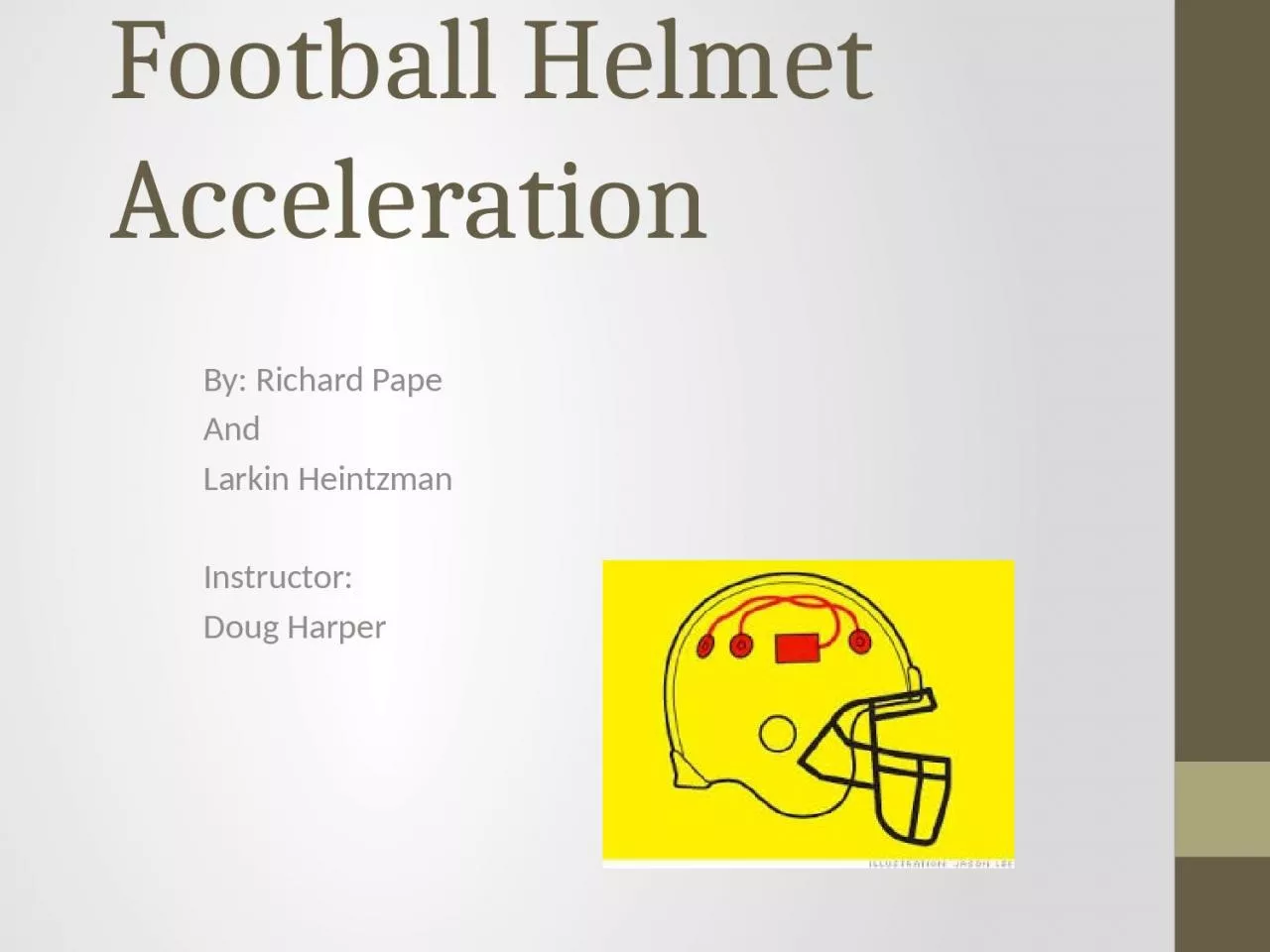

By Richard Pape And Larkin Heintzman Instructor Doug Harper What is O ur Project Our project is to build a model for the acceleration of a football helmet during a collision The Impact will be delivered by a small hammer ID: 1030275
Download Presentation The PPT/PDF document "Football Helmet Acceleration" is the property of its rightful owner. Permission is granted to download and print the materials on this web site for personal, non-commercial use only, and to display it on your personal computer provided you do not modify the materials and that you retain all copyright notices contained in the materials. By downloading content from our website, you accept the terms of this agreement.
1. Football Helmet AccelerationBy: Richard PapeAndLarkin HeintzmanInstructor:Doug Harper
2. What is Our ProjectOur project is to build a model for the acceleration of a football helmet during a collision.The Impact will be delivered by a small hammer
3. What's the Point?Determining the forces being applied to a football helmet during a collision could be useful in the following ways:Helping athletes avoid major head traumaDetermining where more padding is required inside the helmetWorking towards building a complete model for the accelerations on the helmet during various types of collisions
4. Methods We Will UseOur main program will have the following capabilities:An “Acquire” featureUsed to receive the data from the accelerometersData will be plotted liveThe data sampling rate is adjustableAnd a “Playback” featureUsed to replay previously acquired dataHas the capability to stop, rewind, and pause the playing data.Speed of replay is adjustable
5. Methods We Will UseTo build the model of acceleration we will implement several things:7 AccelerometersCommunicate via SPI (Serial Peripheral Interface)Capable of tracking the X, Y, and Z axis's.The myRIO data acquisition systemAble to run LabVIEW programs without the need for a computer.And a computer to view the results of a testFor the purpose of displaying the data from a test in a user friendly format.
6. What is SPI?SPI is a synchronous serial communication protocolCan be used with multiple peripheral devicesGenerally has one master device, and one or more servant devicesSPI is a 4 wire connectionMISO = Master In Servant OutMOSI = Master Out Servant InSS = Servant SelectSCK = Serial Clock
7. Prototype Front PanelRecording
8. Prototype Front PanelPlayback
9. Progress to Date:Determining the best placement of the accelerometers on the football helmet.Achieving SPI communication with the accelerometers chosen for this projectTesting the accelerometers for functionality
10. Next Steps for ProjectAttach the necessary accelerometers to the football helmetFinalize user interfaceDevelop standard viewing system for user interfaceCarry out testing with all accelerometers attached to the helmet, and gather results
11. The Testing ProcessThe steps of the testing are as follows:Attach accelerometers to the helmetTest acquire function by applying an impact to the helmetTest playback function by reviewing the previously gathered dataReview overall performance of the program
12. Why is Our project unique?Our project is unique in the following ways:We must interface with multiple sensors via SPIWe must develop a format to view several graphs in a user friendly wayAnd lastly we must develop a playback system in our programIn order to accomplish this, we will develop a way to store the data so that we can play it back when the user requests
13. Closing RemarksThe main challenges that remain are:Building the system that allows us to gather data from the impactsAnd developing a user friendly graphing method After we accomplish those two main tasks, we will continue with the actual testing of the system.
14. Questions???